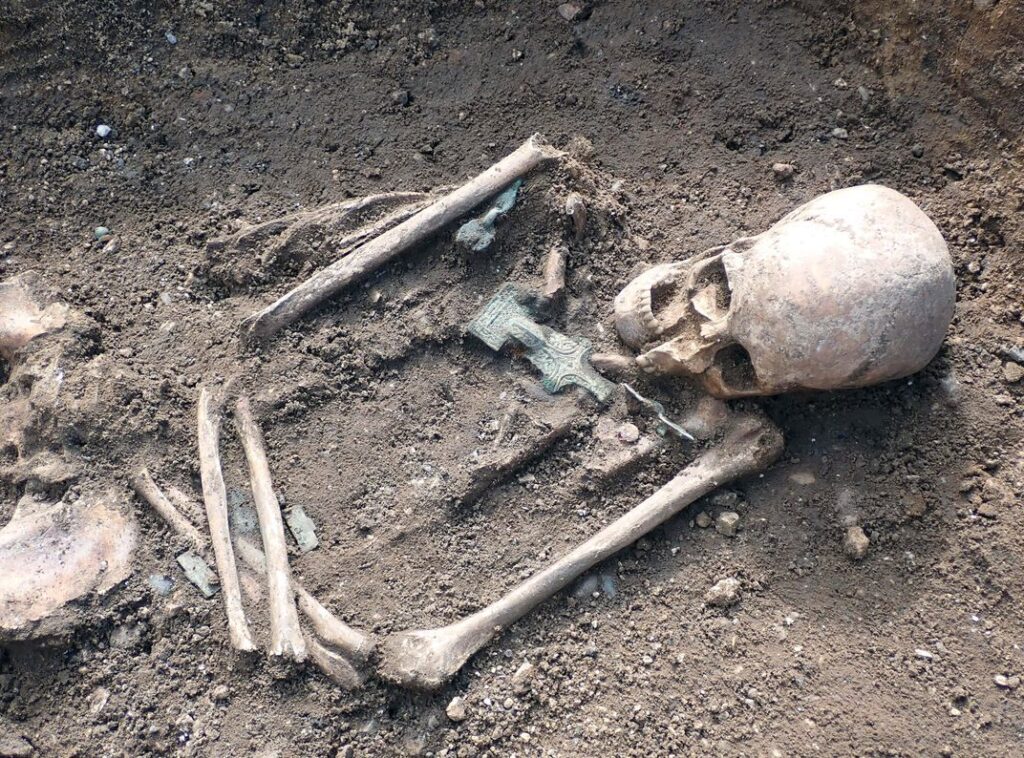Anglo-Saxon Cemetery Found Beneath Demolished University Housing

Anglo-Saxon Cemetery Found Beneath Demolished University Housing
On a plot of land earmarked to become University of Cambridge accommodation, an Anglo-Saxon burial ground was found.
More than 60 graves that date back to a similar period as the famous Sutton Hoo site, about 400-650 AD, were discovered by excavations at the site.

Many of the burials newly discovered include grave goods such as brooches of bronze, necklaces of beads, flasks of glass, weapons, and pottery.
Experts claim the haul of artefacts is one of British archaeology’s mos significant finds since the Sutton Hoo burial ship was found in 1938.
There is also evidence of Iron Age structures as well as objects dating back to Roman times.
Analysis of the extremely well-preserved artefacts suggests the cemetery was primarily used during the 5th and 6th centuries, and possibly into the 7th century.

Dr Caroline Goodson, senior Cambridge University lecturer, said: ‘The excavation of this cemetery provides an outstanding opportunity to explore very early medieval Britain, interactions between the island and the continent, and changing ways of life around the ruins of Roman-period Cambridge.
‘We are thrilled to have the chance to examine this site and integrate these finds with other early medieval archaeology along this side of the river Cam to understand better this transformative period in history.’
The existence of an early medieval cemetery on this Cambridge site has been presumed since the nineteenth century.
COnstruction began last summer on the new accommodation block for students and saw buildings demolished as part of the redevelopment project.
A team from Albion Archaeology then set about digging up the site to look for any fields of historical value.
David Ingham, from Albion Archaeology, said: ‘We always knew there was a chance of finding a cemetery, but we didn’t expect to find as many graves as we did.
‘What really surprised us was how well they had survived beneath the 20th century houses.
‘Burials from this date are so often found in small numbers or with the bones barely surviving because of the soil’s acidity, but this cemetery offers a real chance to fill some of the gaps in our knowledge about the people who lived in East Anglia after the Roman period had ended.’
This will provide new information about dress, burial habits, and health and disease of the time period.
New methods of analysis used on the site are being used in the hope of finding fresh information about migration and family relationships across medieval Britain and Northern Europe.

King’s College Cambridge is appointing a four-year research fellow to continue the work.
‘These finds are tremendously exciting for King’s, and I’m delighted that the research fellowship will enable a substantial research project,’ said Professor Michael Proctor, Provost of King’s.
‘The wonderful new accommodation being built at Croft Gardens will help generations of students in the future; and what we have found during construction will also give us a unique opportunity to learn much more about the past.’